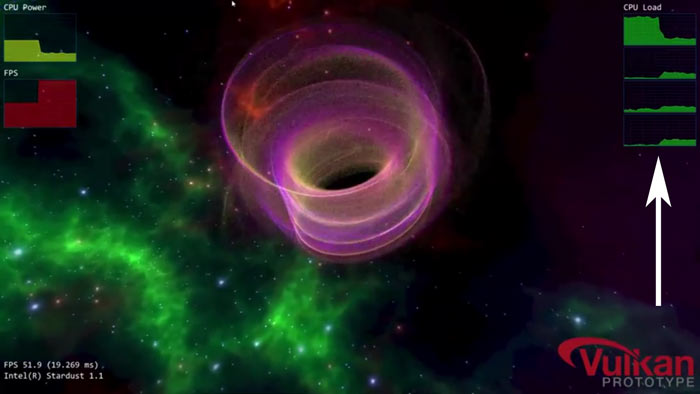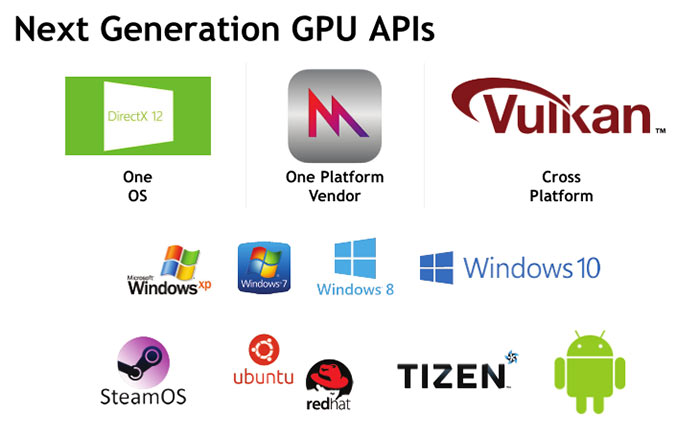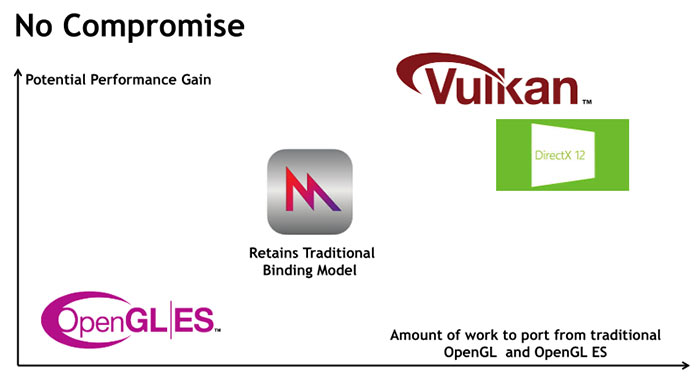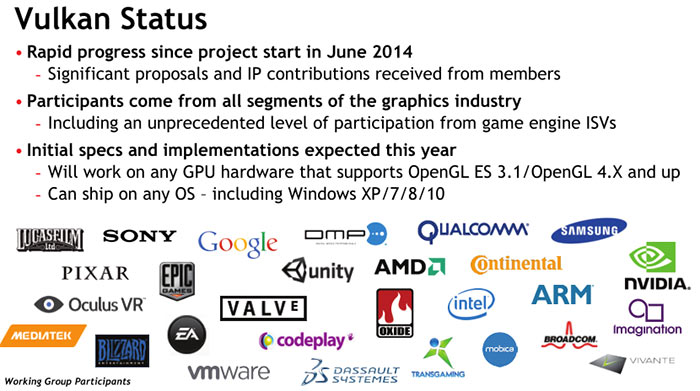Intel demonstrated the capabilities of the Vulkan API at the recent SIGGRAPH 2015 event. This weekend it made a video available featuring its Stardust graphics demo running on a Windows machine powered by an Intel quad-core processor, comparing the performance when switching from OpenGL to Vulkan APIs. The new API made quite a difference. Vulkan was announced in March this year.
As you can see above, Intel's demo shows both the performance and power saving benefits of Vulkan over OpenGL. First of all a machine was shown running the Stardust demo under OpenGL and you could see on the right hand side of the screen that all the processing was distinctly single threaded. If you look at the top right of the Stardust demo it shows you CPU core usage across the four cores in the processor being used but under OpenGL only one core was running at full throttle. The demo ran about 25fps using this configuration.

Next the demo was switched, on the same machine, to run the Vulkan API. The frame rate counter (bottom left of screen), rose to about 50fps. You could also see the CPU power consumption drop drastically (upper left), and the processing load spread out quite evenly between the four cores of the CPU (upper right). The screenshot above shows what happened when the API was switched to Vulkan. I've highlighted the API switch time with a big white arrow.

Trying a different mode, the demo was switched to 'lock mode' where fps are fixed. This allowed Intel to demo the power usage difference between OpenGL and Vulkan. In this part of the demo, when the API is switched, you simply see a dip in the CPU power usage on the left as fps are locked. The power usage is about half. On the right, again you see the processing load split between the four cores/threads.

Vulkan is designed for not just desktop PCs but also mobiles and tablets. It is based upon some of the pioneering work done with the Mantle API and is fully open source. The initial specs and implementations will be complete this year and Vulkan has wide support in the computing and entertainment industry. Intel plans to use Vulkan in a Linux driver for its integrated HD graphics.














